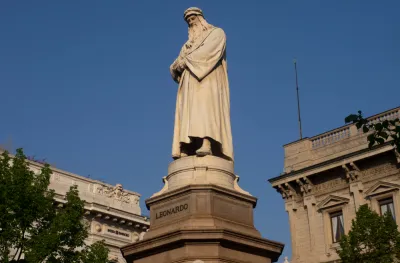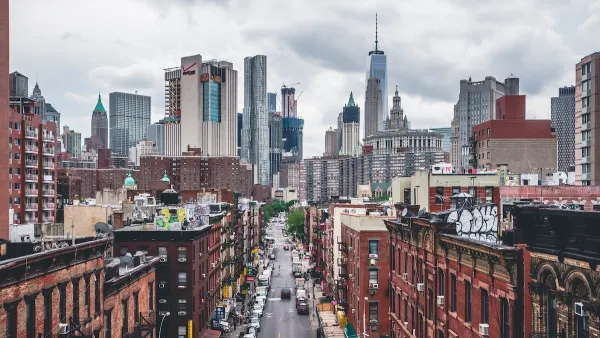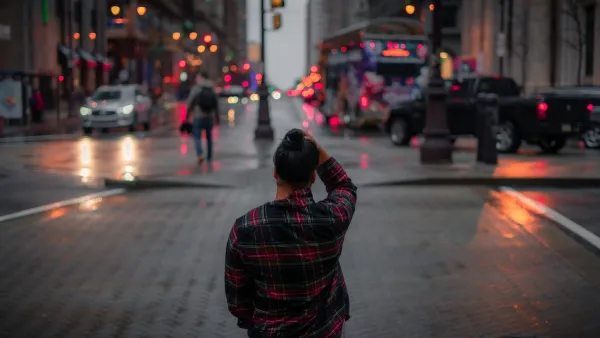Leonardo Da Vinci gets credit for many inventions and creative breakthroughs, but his contributions to the theory of city making gets less credit.

Leonardo Da Vinci died 500 years ago on May 2, and Allesandro Melis writes to describe the great thinker and artist's role in the birth of urbanism in the 15th century.
"Although the Renaissance is renown as an era of incredible progress in art and architecture, it’s rarely noted that the 15th century also marked the birth of urbanism as a true discipline," according to Melis. Da Vinci was one of the thinkers contributing to this nascent field of intellectualism. "Around 1486—after a pestilence that killed half the population in Milan—Leonardo turned his thoughts to urban planning problems. Following a typical Renaissance trend, he began to work out an 'ideal city' project, which, due to its excessive costs, would remain unfulfilled."
Melis shares a reconstruction of da Vinci's work on the subject of a new city along the Ticino River, as collected in Paris manuscript B and Codex Atlanticus. Among numerous innovative propositions, "the true originality of Leonardo’s vision was its fusion of architecture and engineering," according to Melis. "Leonardo made designs for extensive hydraulic plants to create artificial canals throughout the city. The canals, regulated by locks and basins, were supposed to make it easier for boats to navigate inland and transport goods."
"Leonardo also thought that the width of the streets ought to match the average height of the adjacent houses: a rule still followed in many contemporary cities across Italy, to allow access to sun and reduce the risk of damage from earthquakes."
Melis concludes by describing da Vinci's ideas as relevant in contemporary times, as well as models for the future of urban planning.
FULL STORY: The Urban Planning Vision of Leonardo da Vinci

Analysis: Cybertruck Fatality Rate Far Exceeds That of Ford Pinto
The Tesla Cybertruck was recalled seven times last year.

National Parks Layoffs Will Cause Communities to Lose Billions
Thousands of essential park workers were laid off this week, just before the busy spring break season.

Retro-silient?: America’s First “Eco-burb,” The Woodlands Turns 50
A master-planned community north of Houston offers lessons on green infrastructure and resilient design, but falls short of its founder’s lofty affordability and walkability goals.

Test News Post 1
This is a summary

Analysis: Cybertruck Fatality Rate Far Exceeds That of Ford Pinto
The Tesla Cybertruck was recalled seven times last year.

Test News Headline 46
Test for the image on the front page.
Urban Design for Planners 1: Software Tools
This six-course series explores essential urban design concepts using open source software and equips planners with the tools they need to participate fully in the urban design process.
Planning for Universal Design
Learn the tools for implementing Universal Design in planning regulations.
EMC Planning Group, Inc.
Planetizen
Planetizen
Mpact (formerly Rail~Volution)
Great Falls Development Authority, Inc.
HUDs Office of Policy Development and Research
NYU Wagner Graduate School of Public Service




























